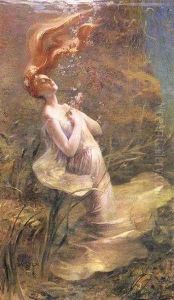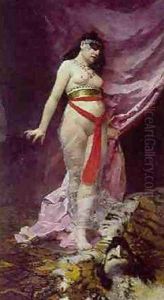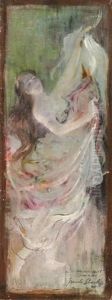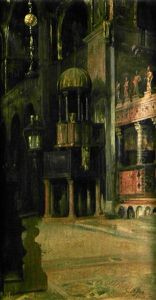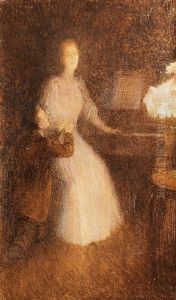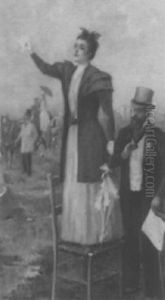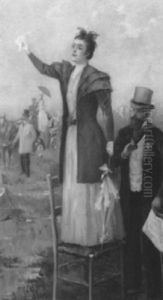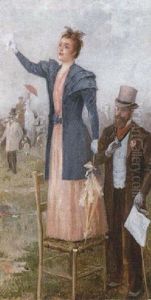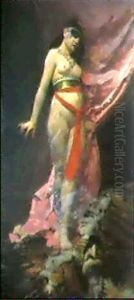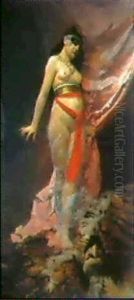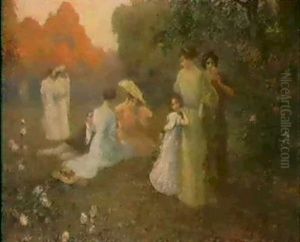Paul Albert Steck Paintings
Paul Albert Steck was a French painter and sculptor born in 1866 in Troyes, France. Steck's artistic journey began at a young age, reflecting the rich cultural heritage of his homeland. He pursued his passion for art by enrolling in the École des Beaux-Arts in Paris. Under the tutelage of renowned artists such as Alexandre Cabanel and Fernand Cormon, Steck honed his skills in both painting and sculpture, embracing the academic traditions of the French art scene of the late 19th and early 20th centuries.
Steck's body of work predominantly features religious themes, classical subjects, and portraits. His style, deeply rooted in academicism, was characterized by its precision, adherence to classical forms, and a meticulous attention to detail. These qualities earned him recognition and accolades in his time, including awards at the Paris Salon, an annual art exhibition that was the pinnacle of success for artists in France.
Despite his achievements, Paul Albert Steck's work is less known today than that of his contemporaries, a fate not uncommon for many academically trained artists of his era, as the art world shifted towards Modernism and avant-garde movements in the early 20th century. However, his sculptures and paintings remain a testament to the technical skill and classical beauty appreciated by art collectors and historians.
Steck's contribution to art extends beyond his own creations. He was a respected teacher, imparting his knowledge and skills to the next generation of artists. His legacy is preserved in the collections of French museums and in the works of his students.
Paul Albert Steck passed away in 1924, leaving behind a body of work that, though overshadowed by the emerging trends of his time, continues to be appreciated for its craftsmanship and adherence to the classical tradition. His art captures the spirit of an era that valued technical skill and classical beauty, offering a window into the rich artistic heritage of France.
